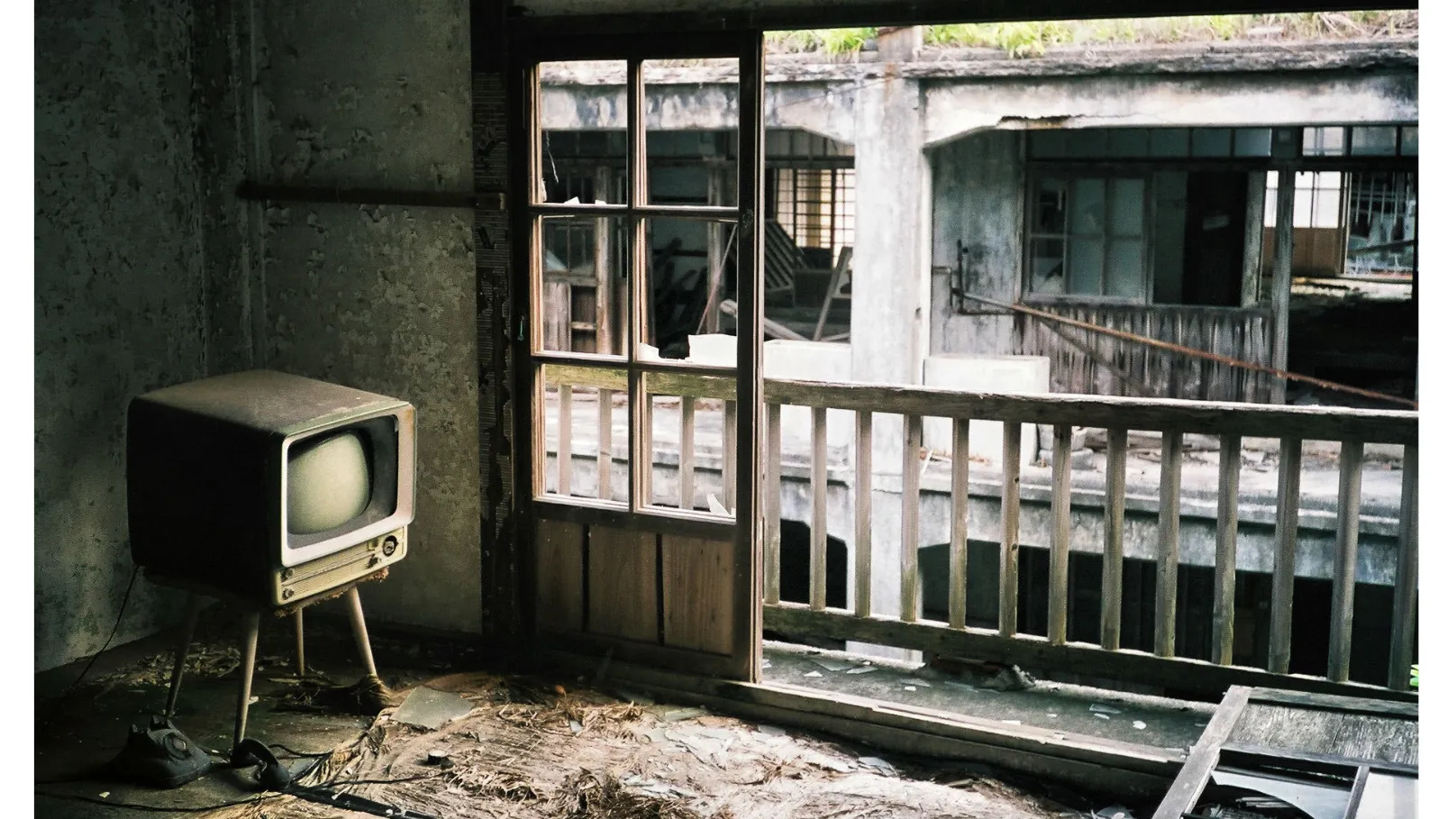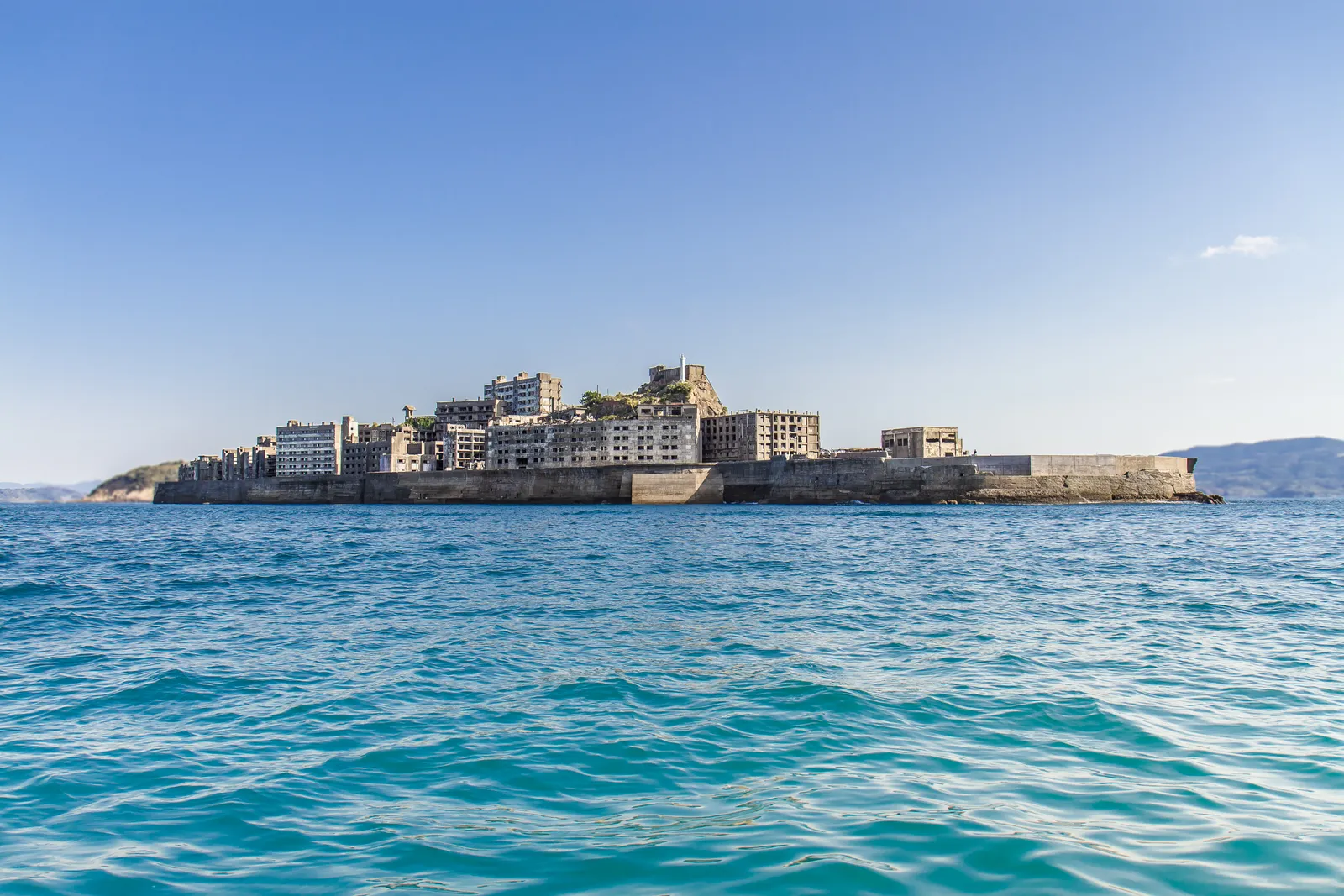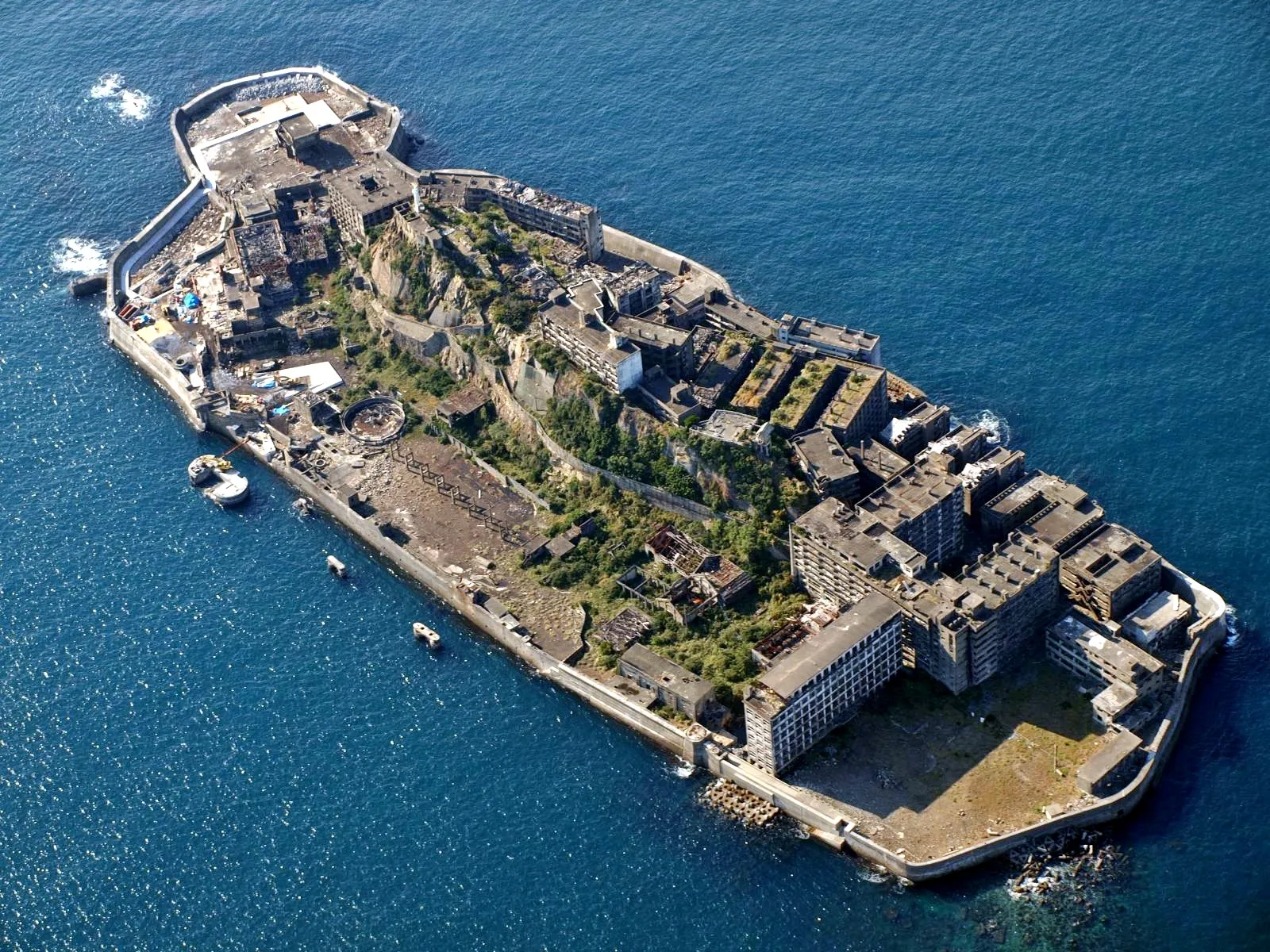Gunkanjima Island, also known as Hashima Island, is located approximately 15 kilometers (about 9.3 miles) from Nagasaki, Japan. It is a small, stark island, measuring around 6.3 hectares (15.6 acres) in size and rising steeply from the sea, resembling a battleship—a resemblance that earned it the nickname “Gunkanjima,” which translates to “Battleship Island.” Initially, the island was uninhabited and used primarily for fishing. However, in the late 19th century, Gunkanjima gained significance as a coal mining facility, and its landscape dramatically transformed as it became a hub of industrial activity.
During its heyday, particularly from the 1950s to the 1970s, Gunkanjima Island was a thriving community. The coal industry flourished due to the demands of Japan’s rapid industrialization post-World War II. At its peak, the island housed over 5,000 residents, making it one of the most densely populated places in the world at the time. The living conditions consisted of concrete apartment buildings stacked closely together, reflecting the urgency of accommodating a booming population in a limited space.

The island’s community infrastructure was comprehensive, featuring schools, shops, and recreational facilities. Daily life on Gunkanjima was marked by the mechanized coal extraction processes and the collaborations among workers. The cohesive community dynamic fostered connections among island residents who shared similar lifestyles and experiences related to the grueling demands of coal mining.
Factors such as improved energy sources, coupled with the decline of the coal industry, inevitably contributed to the island’s abandonment in the late 1970s. The once-thriving habitat for thousands was left deserted, giving rise to the haunting allure and mystique surrounding Gunkanjima Island today.
The Reasons Behind the Abandonment
Gunkanjima Island, once thriving with life and activity as a coal mining hub, saw its decline in the 1970s due to a series of significant factors. One of the primary reasons for its abandonment was the gradual downturn of the coal industry in Japan. As the global energy landscape evolved, demand for coal began to wane. The Japanese government sought to innovate its energy policies, leading to a shift towards alternative energy sources such as oil and natural gas. This transition dramatically altered the energy landscape and rendered coal mining operations less viable.
As the coal mines ceased to be profitable, the primary coal company operating on Gunkanjima Island made the decision to close its facilities in 1974. This closure marked a critical turning point, leading to the shuttering of the mines that had sustained the local population for decades. The economic consequences for the residents were dire, as many people relied on the mining industry for their livelihoods. With diminishing job opportunities, residents faced a hard choice: to remain on the island in a rapidly deteriorating economic environment or seek better prospects elsewhere.

The resulting mass migration of residents significantly contributed to Gunkanjima’s ghostly reputation today. As entire families departed in search of work and a more stable future, the once-bustling community transformed into an eerie shell of its former self. Buildings, once filled with life, were left to decay in silence. Gunkanjima consequently earned its moniker as ‘Ghost Island,’ a reflection of the desolation left in the wake of economic shifts and the abandonment of an industry that had once thrived. The legacy of these events serves as a poignant reminder of the broader transformations occurring within the global energy sector during that era.
Can You Live on Gunkanjima Island Today?
Gunkanjima Island, known for its haunting landscapes and rich history as a coal mining site, currently stands as a ghost town. This deserted island, officially named Hashima, is located off the coast of Nagasaki, Japan. While the idea of living on such a historical platform evokes curiosity, it is essential to understand the legal and safety frameworks governing the island today. Presently, permanent residency on Gunkanjima is prohibited, primarily due to numerous safety concerns stemming from its derelict state.
The Japanese government has deemed the island unsafe for habitation, considering its crumbling infrastructure and potential hazards. Following its abandonment in 1974, Gunkanjima has experienced significant deterioration, with buildings succumbing to natural elements over time. Consequently, the environment presents challenges, further complicating any attempt at permanent settlement. Nevertheless, Gunkanjima has been recognized as a site of cultural significance and, as such, it is subject to preservation efforts aimed at maintaining its historical integrity.
Tourism is permitted, allowing visitors to explore the remnants of this once-thriving community. Guided tours provide an opportunity for guests to witness the island’s iconic structures and gain insight into its rich history, albeit under strict regulations. Safety measures have been implemented to protect tourists, including designated pathways and limited access to certain areas deemed too dangerous. These efforts underscore the reality that while Gunkanjima remains a fascinating destination for exploration, living on the island is not a feasible option.
In summary, Gunkanjima Island’s current status prohibits permanent residency due to safety and environmental concerns. Visitors can engage with the island’s history through guided tours, but all interactions are carefully regulated to ensure safety. This balance between tourism and preservation highlights the unique allure of Gunkanjima as a historical and cultural site.
The Allure of Gunkanjima Island: Myths and Tourism
The enigmatic Gunkanjima Island, officially known as Hashima Island, has captivated the imaginations of many, fostering a rich tapestry of myths and legends that enhance its appeal as a tourist destination. Originally an active coal mining facility, the island was abandoned in the 1970s, subsequently shrouding it in an aura of mystery. It is said that the ghosts of former inhabitants wander the crumbling buildings, their stories lingering in the wind. Such tales contribute to an eerie atmosphere that draws urban explorers and adventure seekers alike, turning Gunkanjima into a modern-day ghost town.
This attraction has not gone unnoticed by the media; Gunkanjima has appeared in various popular culture outlets, including films and literature. Notably, it was featured in the James Bond film “Skyfall,” which showcased its rugged beauty and desolate structures, ultimately elevating the island’s profile on the global stage. Additionally, numerous documentaries and television programs have explored its haunted reputation while showcasing the industrial architecture that represents a bygone era. These portrayals have helped cement Gunkanjima’s status as a symbol of industrial prowess and the decline that followed, attracting tourists seeking a deeper connection with Japan’s industrial heritage.
